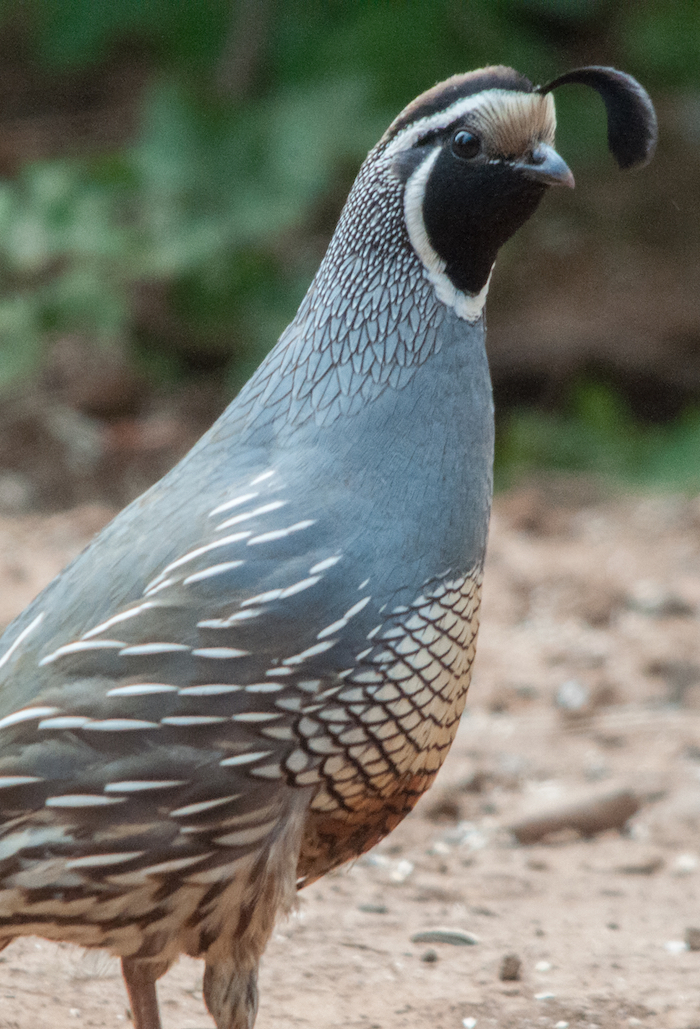
If your True Love went local, and instead of offering an Old World “partridge in a pear tree” gave you their California native counterparts, be glad! A quail in a crab apple brings much to enjoy!
Quail, after all, are a lesson in living the good life!
For starters, they enjoy music. They sing to one another, a hello call that is usually rendered Chi-CA-go, although the North State dialect sounds more like Lake-SHAS-ta. Pairs sing together, duets in which the female maintains the hello refrain and the male fits high grace notes into the spaces of her song.
Quail are dedicated parents, too. They have large families, 10-16 eggs in a clutch, or more if a neighbor contributes. They help their children explore the world, watching dutifully as the young leave the nest within a day of hatching to start poking at the world, beak first. The parents are, of course, unable to produce milk, but their chicks, no more discerning than human infants, pick through the adults’ feces and, just as humans acquire valuable antibodies through nursing, they swallow protozoans that help in digestion.
Families of quail typically neighbor up to form a covey, a community for living and child-rearing that unsurprisingly increases adult life expectancy. The covey keeps together with an ongoing low pit-pit chatter: I’m right here – Don’t go away – We’re OK.
Sometimes a male will perch prominently on a bush, boulder, or fencepost , but he is not alone. He is watching for danger, and if he becomes alerted his calls grow louder and more urgent. Other males in the covey may join him to peck at a small predator, or the quail may all flee. Once the chicks can fly, which begins at about day ten, the covey’s wings create a burst of thunderous flutter as the birds explode into their short flights from peril.
The high-perched male is certainly watching for predators, but he might also be showing off a bit. Quail are stylish, and, while the female wears the muted tones common to avian patterns of nest camouflage, the male sports a striking attire of scaled grays, chestnut, cream, black and white, all under a burgundy crown decorated with a black plume that might inspire royalty, or punk rockers, or a praetorian guard.
Beyond sharing the cultural pleasures of music, family, community, and flair, quail take care of their individual physical needs, too. They eat a healthy diet, up to 30% lean meat, but mostly vegetables—seeds and such. They also get enough sleep. Particularly in winter, while hordes of daybreak sparrows flitter through yards and under feeders, quail become scarce, seeming content to sleep late through the cold hours of the season. Their coveys, numbering scores or hundreds of birds, provide plenty of eyes and ears to attend to safety in their brushy hideaways and protective trees.
This good life seems to be serving the quail well. In a time when many species are declining, California quail have slightly increased their population, even while sustaining a statewide shotgun harvest of a million birds per year.
If you have brush close by, California quail may troop to your backyard bird feeder. And if they pass an old crab apple tree that still struggles along the fenceline, perhaps you’ll hear them chuckle a low song of satisfaction.
